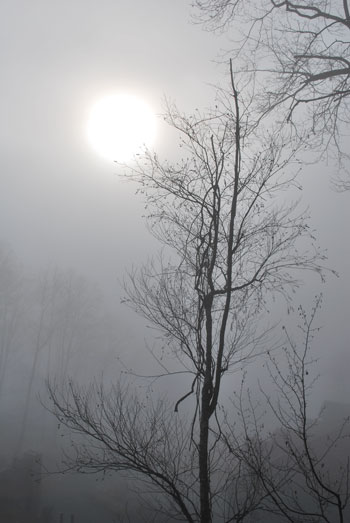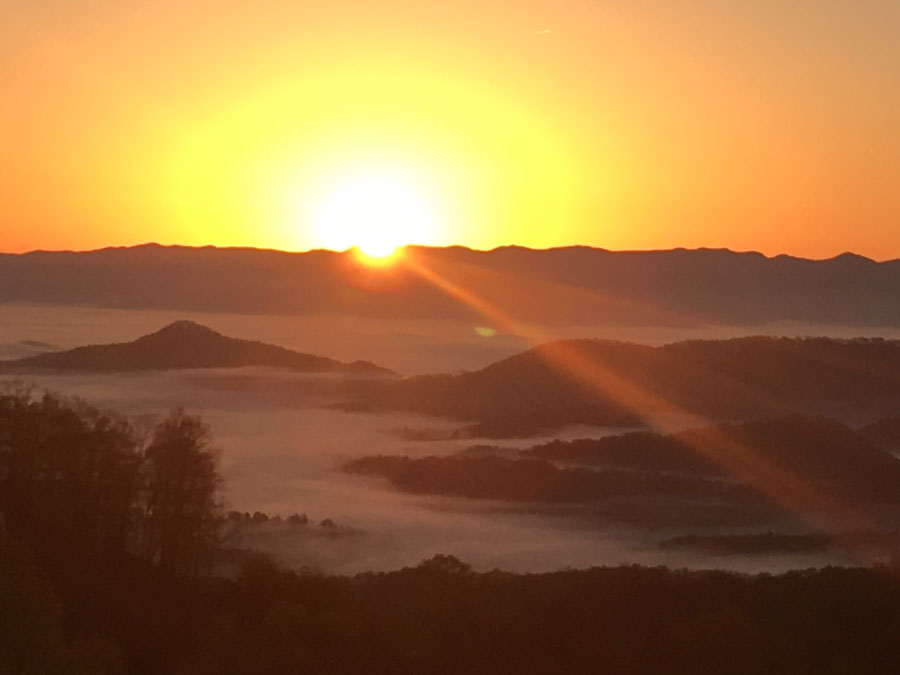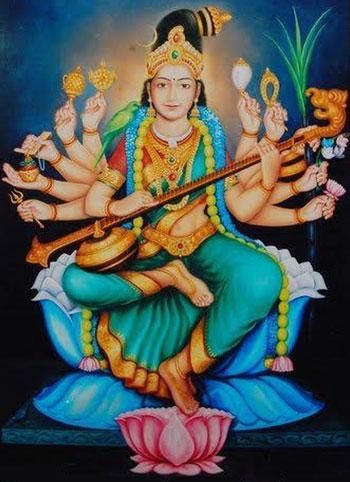by Michael Mamas | Monday, September 25, 2017 | The Gods |
Raja typically means king of a kingdom. But in a more cosmic sense, Raja is the organizing power of the structure of existence. Raja Maathungi is the Goddess who presides over that. Raja Maathungi is similar to Saraswathi, the Goddess of intelligence. Intelligence means structure.
It’s beautiful that pure Consciousness becomes conscious of itself, perceives itself as other, and two things are born. Consciousness becomes, aware of those two things, a third thing and it cascades out in this crystalline structure. One becomes two, three, a fourth, a fifth…. It’s that very structure interacting with itself. It’s lively; it’s not like you build a crystal and it just sits there; it’s dynamic. Consciousness isn’t static; it’s superfluid. So, it’s the liveliness of that structure which is intelligence itself. I think that’s just beautiful.
So Raja Maathungi is that. I guess that’s why royalty wear crowns and gemstones! Raja Maathungi is the crowning gemstone of pure Consciousness, which upholds and is the reference point for the intelligence that permeates and upholds the universe, and is the governing principle of the universe. So, by aligning with Raja Maathungi, we align with the governing principles that uphold all of life. If we align with that, it upholds our lives, in a very beautiful way.
© Michael Mamas. All rights reserved.
by Michael Mamas | Monday, September 18, 2017 | Vedic Arts |
Note: This blog post is from Dave Ehmke.
Within the 12 signs of the zodiac there a number of powerful points (Bindu points). The transition from water signs (Cancer, Scorpio, and Pisces) to fire signs (Aries, Leo and Sagittarius) are such points. When a planet is in the last few degrees of a water sign or the first few degrees of a fire sign, it is considered Gandanta, which refers to "a knot at the end" and is known as "a drowning point".
During the past month, Saturn has been very strong (stationary on August 25) and at the end of Scorpio, while Rahu and Ketu transited from Leo and Aquarius to Cancer and Capricorn. So all of these slow moving malefics were Gandanta. Also, the solar eclipse on August 21 took place at 5 degrees of Leo, which significantly affected the Gandanta point between Leo and Cancer. Since the eclipse, and during this time of drowning, we have seen an incredible amount of powerful hurricanes directly affecting the U.S. (where the eclipse was visible).
The transit of Saturn through the final degrees of Scorpio is especially fascinating. Some say that of the 3 Gandanta points, this is the most challenging and powerful. This spot is signified by the tip of Sagittarius’s bow and the tip of Scorpio’s tail, and is considered poisonous. To make the whole thing even more fascinating, the center of the Galaxy is located at this point.
As you can see on this picture, the tip of Sagittarius’ bow (the most inward star of the teapot) and the tip of Scorpio’s tail point directly at the Galactic Center. Some say that this is a point of intense transformation, moving the inner soul towards merging with universal consciousness.
© Michael Mamas. All rights reserved.
by Michael Mamas | Thursday, June 1, 2017 | Vedic Science |

1. Consciousness becomes aware of itself and duality (relativity, manifest existence) is born.
2. In Christianity this is called the Father (Knower), the Son (the Known), and the Holy Spirit (process of Knowing). The Father is pure Consciousness, the Son is what Consciousness sees when it looks at itself and perceives it as other, and the Holy Spirit is a facet of the personified quality of God. As with all of us, the personality has many facets. As has been said, “God has many faces.”
3. In the Vedic tradition:
The Father = Rishi = Knower = pure Consciousness
The Son = Chandas = the Known = the object of perception
The Holy Spirit = Devata = process of Knowing = the relationship between Consciousness and the object it perceives, i.e., the process by which Consciousness becomes conscious of itself
| the Knower |
the Known |
the process of Knowing |
| Rishi |
Chandas |
Devata |
| Father |
Son |
Holy Spirit |
4. This is not only the manifestation of the process from Oneness to multiplicity, but also exists in the relationship between all things.
5. Right now, you are the Knower, the points listed here are the Known, and your relationship with these points is the process of Knowing.
6. There are many different ways you can look at the same thing: different processes of Knowing, Devata values.
7. Your relationship with the Devata value determines what you believe the Known (Chandas) to be.
8. Each of the three (Father, Son, Holy Spirit) affects (colors) the nature of the other two.
9. Reality is perspective.
10. There is no bottom line or, if you prefer, the bottom line is no-thing-ness, pure Is-ness, the field of pure Consciousness.
© Michael Mamas. All rights reserved.
by Michael Mamas | Wednesday, May 31, 2017 | The Veda |

- The underlying basis of existence is pure Consciousness, what modern physics calls “the unified field.”
- Pure Consciousness = Is-ness. It is the stuff that thing-ness is made of… Like in a dream, everything is born out of Consciousness.
- Consciousness is conscious by its own nature.
- Before the manifestation of the universe (the world of things), what can Consciousness be conscious of? The only thing that exists: namely, itself.
- Consciousness becomes conscious of itself, and perceives it as other. Duality is born. That is why the universe is called the field of “Maya”… illusion… the domain where multiplicity is experienced as reality.
- Consciousness becomes aware of itself as other, and then becomes aware of those two things, and a third thing is born. The process goes on and on to unfold the field of multiplicity… This is called the universe, i.e., Creation.
- Modern physics calls this self-interaction of pure Consciousness “quantum mechanics,” the mechanics of the quantization of Oneness… the foundation of existence. Hindus call that level “the Veda.” It is simply Nature. Nature is born out of the nature of pure Consciousness.
- The structure of Nature is profoundly complex. People see various patterns in that structure, and call that limited perspective Truth. In reality, it is just one of many simultaneously valid, but contradictory paradigms. Paradox is the nature of existence. All such paradigms are superficial echoes… limited knowledge.
- Some call the texts about the knowledge of the Veda “secret doctrines,” thinking they can read them and know all the secrets of creation. But they are secret doctrines because even after people read them, the knowledge remains a secret to those people. Yet, those people believe they ‘get it.’
- The cosmic joke has many facets. One facet is that people think they get it, but they don’t. The joke is on them.
- Enlightenment is highly elusive: the razor’s edge.
© Michael Mamas. All rights reserved.
by Michael Mamas | Tuesday, May 30, 2017 | Spiritual Evolution, Vedic Science |
- Vedanta is not really a philosophy. It is a state (level) of consciousness. In the state of Vedanta, one spontaneously sees through the veil of illusion. It is as if everything is lightly etched on the face of Oneness. It is not an attitude or philosophy. It is a physiological level of human evolution. If we’re not careful, studying Vedanta becomes an attempt to put Unboundedness in the boundaries of a box.
- Humans evolve through the elevation of their level of consciousness.
- Deep inside, everybody is one with the source of everything, the essence of all knowledge. This is why so many think they are enlightened when they first learn about Vedanta. The knowledge resonates with that deep inner knowing. Whether or not it is fully integrated with all levels of their being, is quite another matter. Enlightenment means integration.
- Trying to live a limited understanding of Vedanta as a behavior or philosophical overlay in daily life is epidemic, yet tragic. It is attempting to conform to a distorted notion. Enlightenment is not even about conformity. It’s about becoming integrated with the level of life that transcends conformity. Functioning harmoniously with the world of conformity is quite different from losing your Self to those conformities.
- People often think enlightenment looks a certain way, but it does not. Just as every snowflake is unique, every individual is unique.
- There are ever-increasing levels of understanding, but they all parallel. When someone understands Vedanta on a superficial level, it parallels deeper understandings. However, they think they get it. Echoes of Truth, perceived as Truth, hold Truth at bay. This is called the I-get-it Syndrome.
- There are an unlimited number of awakenings along the way. People have an awakening, think they are enlightened, think they ‘get it,’ and go out and teach. Tragic… well intended, but it leads people astray.
- People conform to superficial notions of enlightenment and decide they are enlightened. For example, it’s easy to hold hands and sway and get enchanted with the notion that we are all one. But ultimately, Oneness is something much deeper.
- Every level of understanding dictates a different world view. Once a particular level of understanding is identified with, people decide they ‘get it.’ This precludes them from going deeper. In the Vedic tradition, there is the notion of “Neti, Neti, Neti”: not that, not that, not that. Of course, people hear that notion and decide they ‘get it.” They decide their level of understanding is as deep as it goes.
- Non-attachment is not on the surface. It is deep inside. In the state of non-attachment (freedom from desire), we still can prefer salted caramel ice-cream over vanilla. The full range of emotions is still lived. Lord Rama fell to the ground and sobbed when his wife, Sita, was kidnapped. Yet he was living in the state of non-attachment.
- Some people think they can behave in a Vedantic manner. Behavior is superficial. Living Vedanta does not show on the surface. It is deeper than that.
- Doing the Vedanta cha-cha is a very common syndrome. People think they get Vedanta, enlightenment. But they are only clinging to echoes of Truth.
- It is not about intellectual understanding. It is a state of physiology.
- Every level of understanding is a self-sustaining, circular, impervious world of self-justification. People get stuck in a particular level of understanding. If you talk to them, they ‘get’ everything you say. If you say to them, “Enlightenment is deeper,” they say, “Right.”
- Attaining enlightenment is a highly elusive process, referred to as “traversing the razors edge” or “passing through the eye of the needle.”
- We live in Kali Yuga (the age of ignorance): Ignore-ance. Ignoring what lies deeper. Most ‘teachers’ read a few books, meditate a bit, decide they get it, and go out and teach.
- People sometimes say with pride something like: “I have been meditating for 30 years.” I respond by saying, “If you must measure, evolution is not measured in years, it is measured in lifetimes.”
- It is not comfortable to be in a room full of people identified with (indoctrinated into) a shared level of understanding/indoctrination. You will be judged if you do not conform.
- People call their ‘teacher’ someone who is more indoctrinated into (better at) their indoctrination than they are.

© Michael Mamas. All rights reserved.





